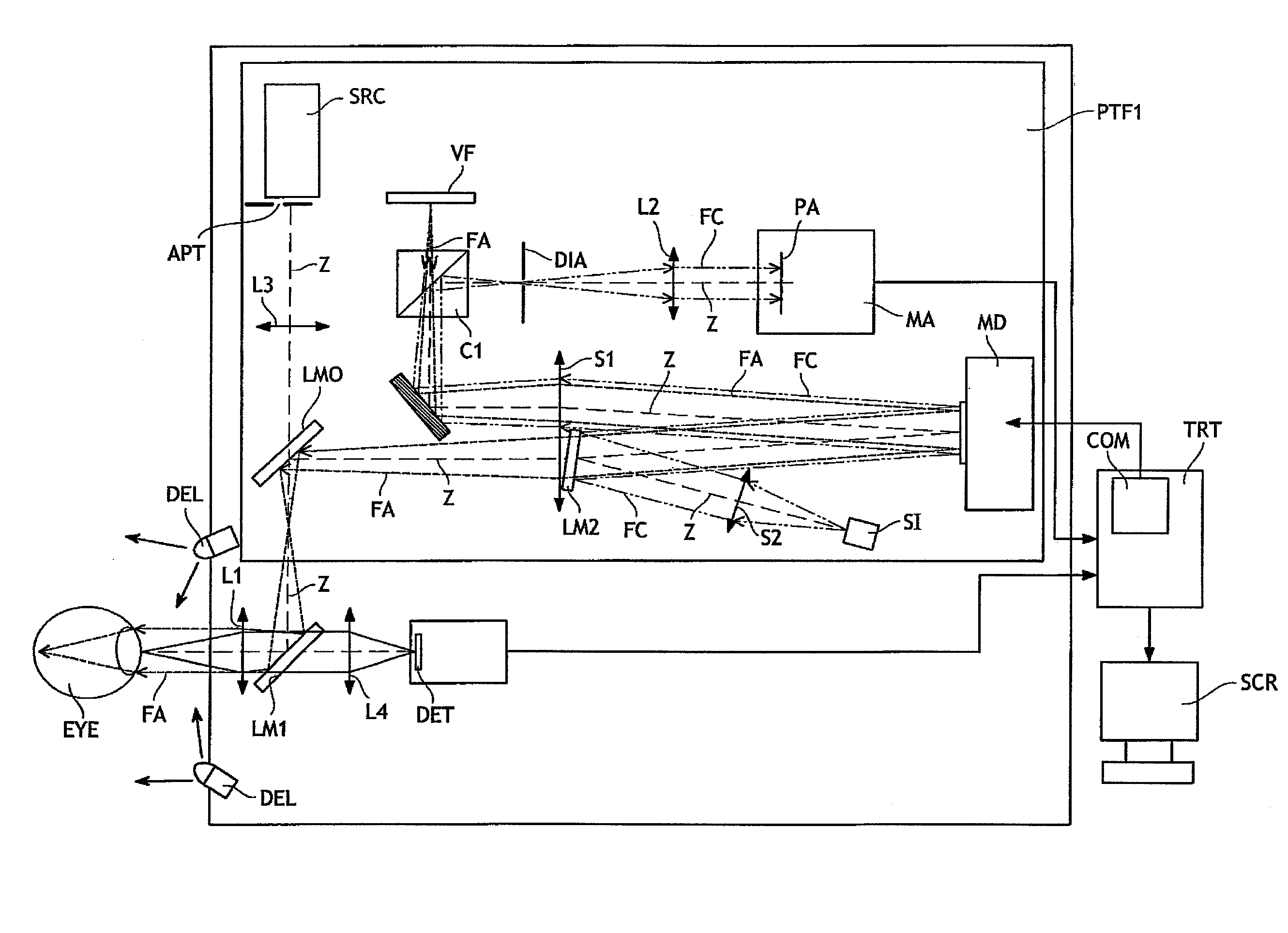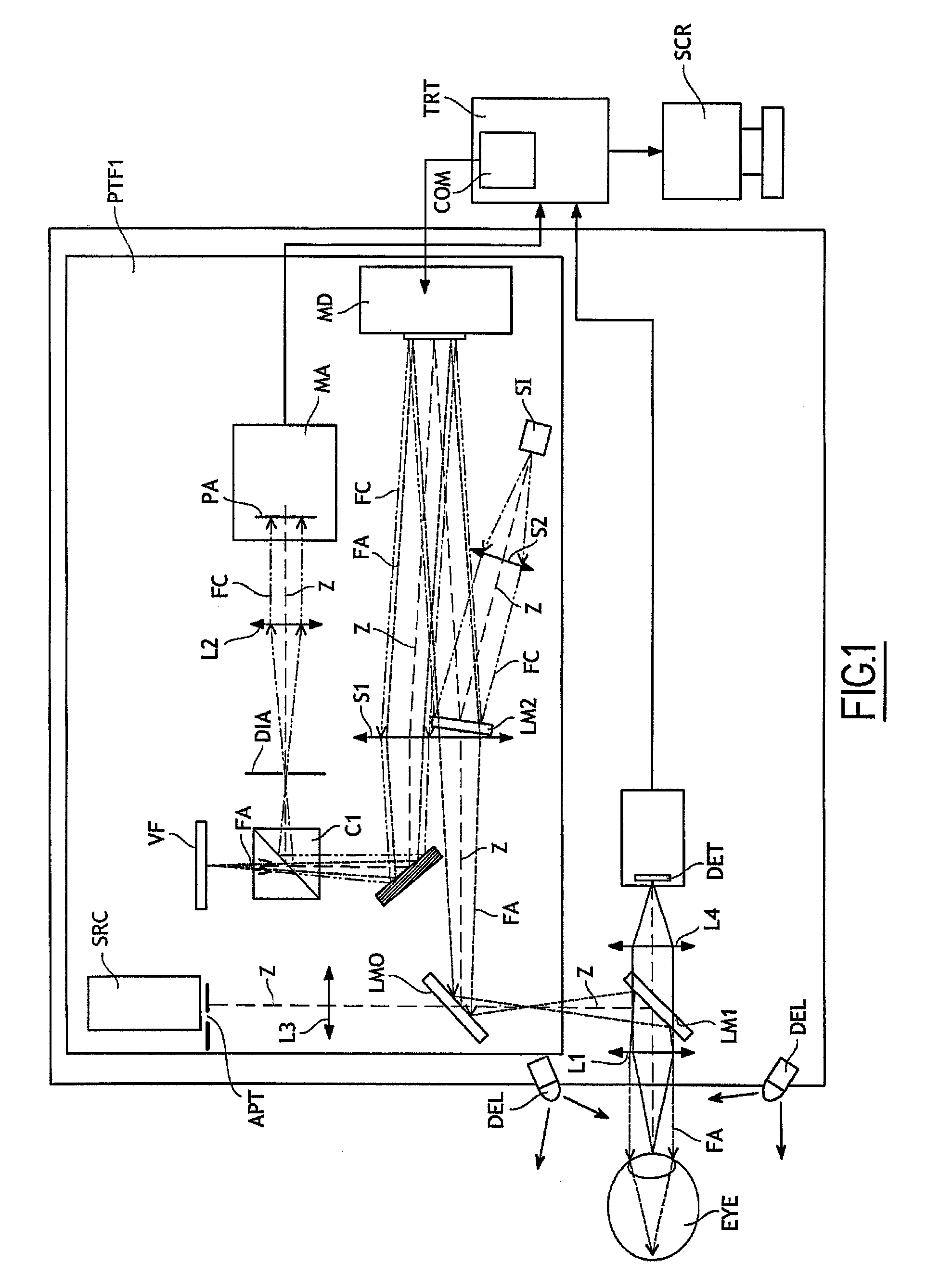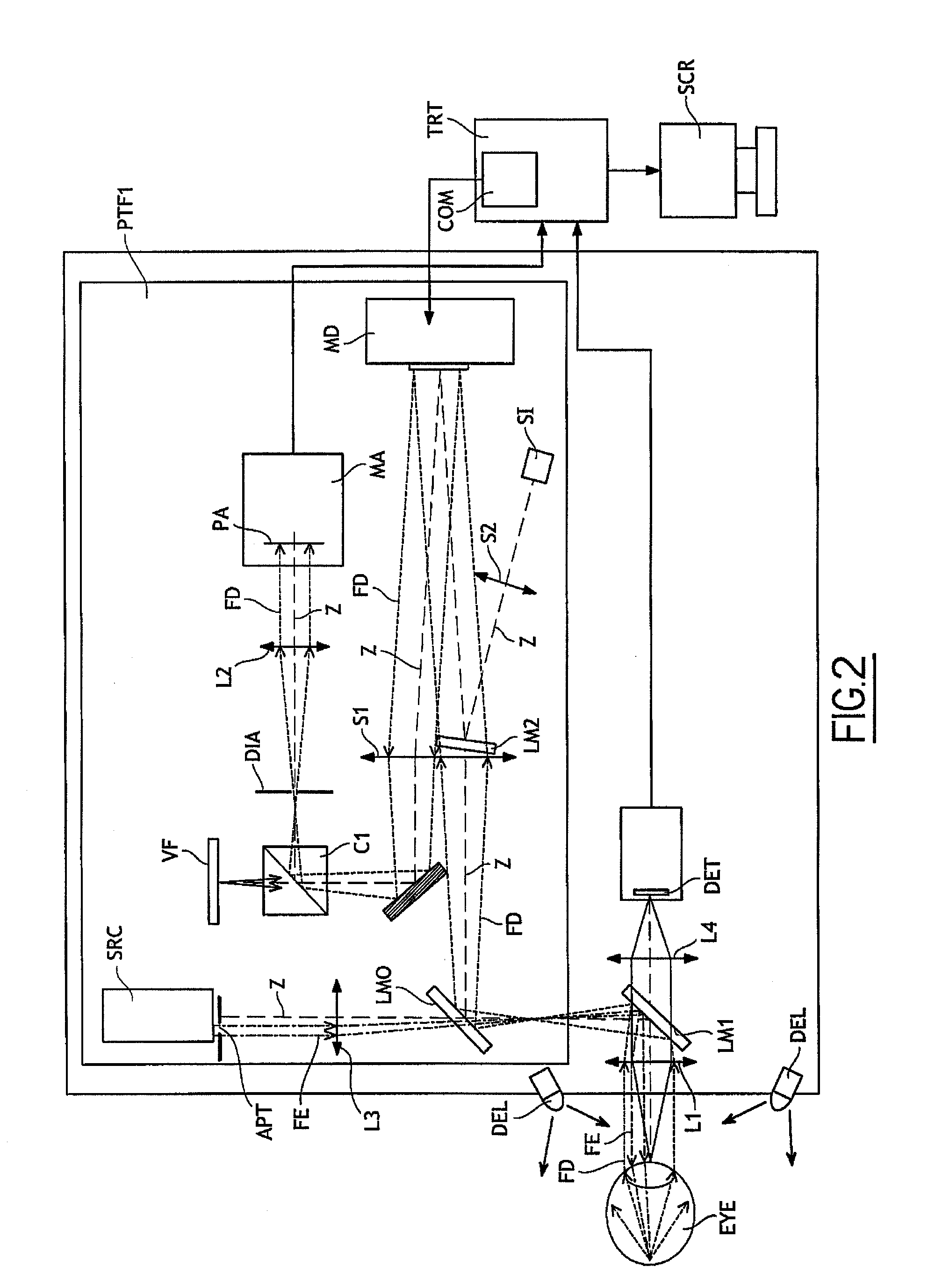Phase modulation device for an ophthalmic instrument, ophthalmic instruments equipped with such device, and related calibration method
a phase modulation and ophthalmic instrument technology, applied in the field of phase modulation devices for ophthalmic instruments, can solve the problems of degrading the quality of optical instruments, losing resolution, and degrading the quality of focusing lasers on the retina, so as to reduce the discomfort of patients, improve the enslavement process, and effective control of phase modulation devices
- Summary
- Abstract
- Description
- Claims
- Application Information
AI Technical Summary
Benefits of technology
Problems solved by technology
Method used
Image
Examples
first embodiment
[0086]the process according to the invention thus makes it possible to calibrate the device according to the invention, without using an artificial eye, and in the absence of the main beam FA.
second embodiment
[0087]the process according to the invention, implemented in the simulator according to the invention and shown in FIG. 1, comprises the following steps:[0088]controlling the modulation means according to the modulation instruction,[0089]positioning an eye to be examined at the output of the simulator according to the invention,[0090]emitting the measurement light beam FC,[0091]emitting the main light beam FA,[0092]modulating the phase of the wave front of the secondary beam, according to the modulation instruction, by the modulation means MD,[0093]modulating the phase of the wave front of the main light beam FA interacting with the eye, according to a modulation instruction, the modulations of the main and measurement beams being simultaneous,[0094]measuring the phase modulation carried out by the modulation means on the secondary beam, and[0095]if the phase modulation carried out by the modulation means on the secondary beam is approximately equal to the modulation instruction, ma...
PUM
| Property | Measurement | Unit |
|---|---|---|
| infrared wavelength | aaaaa | aaaaa |
| wavelength | aaaaa | aaaaa |
| wavelength | aaaaa | aaaaa |
Abstract
Description
Claims
Application Information
 Login to View More
Login to View More - R&D
- Intellectual Property
- Life Sciences
- Materials
- Tech Scout
- Unparalleled Data Quality
- Higher Quality Content
- 60% Fewer Hallucinations
Browse by: Latest US Patents, China's latest patents, Technical Efficacy Thesaurus, Application Domain, Technology Topic, Popular Technical Reports.
© 2025 PatSnap. All rights reserved.Legal|Privacy policy|Modern Slavery Act Transparency Statement|Sitemap|About US| Contact US: help@patsnap.com



